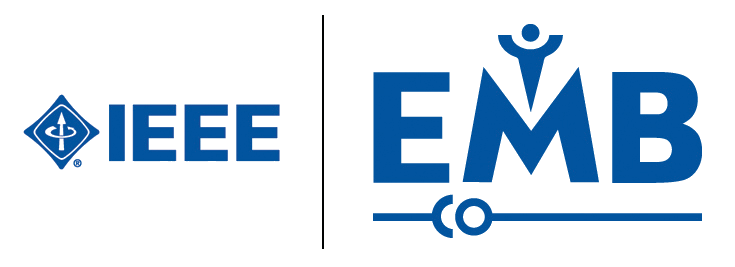

 43rd Annual International Conference of the
43rd Annual International Conference of theIEEE Engineering in Medicine and Biology Society October 30 - November 5, 2021, Virtual Conference


 43rd Annual International Conference of the
43rd Annual International Conference of theIEEE Engineering in Medicine and Biology Society October 30 - November 5, 2021, Virtual Conference |
Technical Program for Monday November 1, 2021 |
Click on To show or hide the keywords and abstract (text summary) of a paper (if available), click on the paper title Open all abstracts Close all abstracts |
| MoOC | LIVE |
| EMBC 2021 Opening & Awards Ceremony | Social Session |
| MoKN | LIVE |
| Opening Plenary Speaker - Gordana Vunjak-Novakovic, Columbia University | Plenary Session |
| MoAT6 | LIVE |
| Mini Symposium - HealthCare Democratization through Biomedical Engineering
Disruptions - Organizer: Michael Friebe |
Mini-symposium |
| 11:30-13:00, Paper MoAT6.1 | |
| Friebe, Michael | Otto-Von-Guericke-University |
| Sheet, Debdoot | Indian Institute of Technology Kharagpur |
| Illanes, Alfredo | Otto-Von-Guericke University of Magdeburg |
| Bonato, Paolo | Harvard Medical School |
| MoAT5 | LIVE |
| Special Session - Engineering and Medicine in Extreme Environments
Organizer: Tobias Cibies |
Special Session |
| 11:30-13:00, Paper MoAT5.1 | |
| Cibis, Tobias | Friedrich-Alexander Universität Erlangen-Nürnberg |
| MoCT6 | LIVE |
| Mini Symposium: New Trends in Perinatal and Pediatric Imaging Organizer:
Yalin Wang |
Mini-symposium |
| 15:00-16:30, Paper MoCT6.1 | |
| Wang, Yalin | Arizona State University |
| Grisan, Enrico | London South Bank University |
| Linguraru, Marius George | Children's National Health System |
| Lepore, Natasha | USC / Children's Hospital Los Angeles |
| MoCT5 | LIVE |
| Meet with Leaders 1 (Pre-Registration Required) | Social Session |
| MoDT5 | LIVE |
| Mini Symposium Recent Advances in Wearable Sensing and Machine Learning for
Biomechanics - a & B Organizers: Omer Inan & Todd Freeborn |
Mini-symposium |
| 17:00-18:30, Paper MoDT5.1 | |
| Inan, Omer | Georgia Institute of Technology |
| Lee, Sunghoon Ivan | University of Massachusetts Amherst |
| Bonato, Paolo | Harvard Medical School |
| Aminian, Kamiar | Ecole Polytechnique Federale De Lausanne |
| Walsh, Conor | Harvard University |
| Leonhardt, Steffen | RWTH Aachen University |
| 17:00-18:30, Paper MoDT5.2 | |
| Freeborn, Todd | University of Alabama |
| Eskofier, Bjoern M | Friedrich-Alexander-Universität Erlangen-Nürnberg |
| Veltink, Peter | University of Twente |
| Sanchez, Benjamin | University of Utah |
| Denis, Kathleen | KU Leuven |
| Slade, Patrick | University of Illinois at Urbana-Champaign |
| MoET6 | LIVE |
| "Special Session: CE's Professional Roles and Responsibilities in a
Post-COVID World Organizer: Fabiola Martinez-Licona" |
Special Session |
| 19:00-20:30, Paper MoET6.1 | |
| Martinez-Licona, Fabiola | Universidad Autonoma Metropolitana |
| Iadanza, Ernesto | Università Degli Studi Di Firenze |
| Sloane, Elliot B. | Center for Healthcare Information Research & Policy (CHIRP) |
| Badnjevic, Almir | Medical Devices Verification Laboratory Verlab |
| Cheng, Michael | Retired Professional |
| MoET5 | LIVE |
| Special Session Machine Learning in Healthcare Organizer: Aristeidis
Sotiras |
Special Session |
| 19:00-20:30, Paper MoET5.1 | |
| Sotiras, Aristeidis | Washington University in Saint Louis |
| Batmanghelich, Kayhan | University of Pittsburgh |